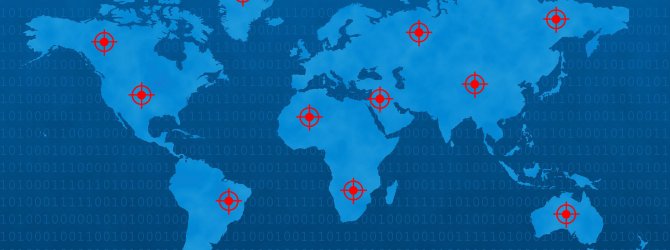-
The Transitional Threat of Violent Extremism
The Transitional Threat of Violent Extremism

Despite the growing number of surveillance activities and counter terrorism projects, local threats of violent extremism are spiralling upward into transnational vectors. This raises a critical question: nearly two decades into the “global fight against terrorism,” what went wrong? In other words, how did the stern fundamentalism of local conflicts intensify and become global?
In their recent report “The Evolution of the Salafi-Jihadist Threat,” the Center for Strategic and International Studies CSIS sheds light on the growing number of “Jihadists” worldwide. Specifically, the report points to nearly four times as many Sunni Islamist militants today as there were on September 11, 2011.
Although the word “Jihadists” contributes to the confusion of terms, the report is still valuable in presenting the following: whilst a large number of violent extremists operate at a local level, they were still able to establish transnational links with other groups, rallying eventually behind what has become a global VE movement. The operational strategy of the self-proclaimed Islamic Caliphate, or Daesh, underscores this shift from local to transnational processes.
Areas of Concern
Three key areas of concern are worth highlighting. First, the use of technology and the crowdsourcing of the terrorist threat across the globe. The appeal of extremist groups has turned ever more potent and far-reaching by them relying on new visual networks and organisational identities. As such, addressing it demands an informed and a multidisciplinary conversation on issues of Cyber Security and a careful examination of the pushback against the terrorist exploitation of modern technologies and platforms.
A conversation with a delicate balance of supporting the tech industry in combating terrorist exploitation whilst also ensuring questions of privacy and basic human freedoms.
Second, the shift from a vertical dimension of escalation to a horizontal one whereby decentralisation has become key to the operation and thinking of such groups. In other words, activating wide networks of sleeping cells, returnees and lone wolfs to carry out attacks beyond classical theatres and actors.
A closer look at the recent 2019 Jolo Cathedral bombings in the Philippines and the Sri Lanka Easter bombings proves two cases in point outlining how the theatre is shifting and expanding geographically. Similarly, the spotted trend of using an increased number of women and girls suicide bombers in regions such as the Lake Chad Basin of Northern Nigeria highlights how new actors are brought into the equation. For example, a 2017 CTC report by Warner and Hilary Matfess revealed that of the, at least, 434 Boko Haram suicide bombers between April 2010 and July 2017, 56 per cent were women.
Third, newcomers are joining the sphere of violent extremism, evident in the increased “populist” and “far-right” terror emerging from stable and, more often than not, democratic societies. For instance, the continued use of racist, xenophobic and Islamophobic rhetoric in France finds strong resonance and connection in other parts of the European continent such as Hungary, New Zealand, the UK and beyond. Clearly, the “populist” and “far-right” terror threat carries a sharper transnational, rather than a domestic, edge. Critical to note about this shift is a characterisation the newcomers share with VE groups: they use a variety of means to articulate their worldviews, and rhetoric seems to be just one of them.
Parallel Tracks
Factoring in these shifts, it becomes clear that answering how the stern fundamentalism of local conflicts intensify and become global requires examining two key parallel tracks.
First, the unaddressed contextual grievances thereto which are utilised by such groups to target potential acolytes of the cause. These include, but are not limited to: issues of social injustice, marginalisation, identity politics, poor governance, exclusive social policies and economic hardships. Combined, these factors point to the need of examining the role of national politics in the transnationalisation of the Salafi-Jihadi threat, which is still a largely under-researched area of concern.
Second, the impact of state-centric security SCS policies on the (de)radicalisation of individuals. This also remains a largely unexplored connection in relation to understanding the effective containment of transnational violent extremism. Recent WANA research has contributed to examining this impact from a regional lens, but certainly more knowledge needs to be created on this track.
The research makes clear that such heavy SCS policies have distinctly characterised the approach to containing transnational Jihad, yet, no standalone military strategy shall suffice. In fact, this approach has arguably yielded more – not less – conflict and higher – not lower – levels of violent extremism.
It is no wonder, then, to note that in the 25 cases of conflicts tracked by the Global Conflict Tracker of the Council on Foreign Relations, not a single conflict has shown the status of improving, with 17 cases of unchanging conflict status, and 8 worsening.
Way Forward
Not only does the existing SCS paradigm fail to recognise the normative human-centric dimensions of security, but it also stands short of tackling the borderless nature of the evolving security threats – including those stemming from the transnational VE movements. Therefore, effective transnational containment strategies require an honest exploration of this particular variable, addressing in the process the lack of knowledge on the impact of these SCS policies and how they trickle down to the local level.
Moving forward, the approach to containing the transnational threat of violent extremism must evolve.
This starts with breaking the state of parallelism between the two aforementioned tracks. It is unwise to continue having one-sided conversations between traditional SCS actors and human security practitioners. For one-sided conversations can only yield one-side interventions. Effective solutions are thus found within the several overlapping circles inbetween the two tracks, not around them. Otherwise, the trajectory will continue to denote a troubling arc. The venom is transnational, and so should be the antidote.

